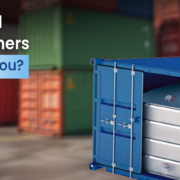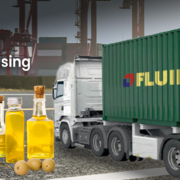How to Choose the Right Container for Bulk Liquid Transport
Why Choosing the Right Container Matters for Bulk Liquid Transport
In global trade, bulk liquid transport plays a key role across industries, from food and beverage to chemicals and oils. But with so many container options available, choosing the wrong one can lead to contamination, spillage, cargo loss, and unnecessary expenses. That’s why selecting the right flexi tanks containers is not just a logistical decision, but a business-critical one.
When product integrity, cost-efficiency, and seamless delivery are on the line, flexi tanks containers emerge as the most reliable and future-forward solution.
Types of Bulk Liquid Shipping Containers: A Quick Overview
Before choosing the right container, it’s important to understand the options available:
- ISO Tanks – Reusable, made of stainless steel, good for hazardous cargo but costly and require cleaning.
- IBCs (Intermediate Bulk Containers) – Stackable plastic tanks, suitable for small batches but not ideal for international shipping.
- Drums or Barrels – Traditional, but offer limited capacity and higher manual handling costs.
- Flexi Tanks Containers – Single-use, collapsible liners fitted inside standard 20-foot containers; ideal for non-hazardous, high-volume liquids.
While each has its purpose, flexi tanks containers are increasingly preferred for their versatility, hygiene, and efficiency in bulk liquid shipping containers.
Key Considerations When Choosing a Liquid Transport Container
Here’s what you should evaluate when choosing your container:
1. Nature of the Liquid
Is the product food-grade, corrosive, temperature-sensitive, or viscous? The container must match the physical and chemical properties of your cargo. For example, flexi tanks containers are ideal for edible oils, wine, fruit juice concentrates, latex, and other non-hazardous liquids.
2. Volume Requirements
High-volume shipments benefit from containers that offer maximum payload with minimum dead weight. Flexitanks can carry up to 24,000 liters, offering up to 30% more volume than drums or IBCs.
3. Loading and Unloading Speed
Time is money in logistics. Flexitanks offer faster loading and discharge compared to other formats, which reduces demurrage costs at ports.
4. Cost of Transport and Cleaning
While ISO tanks are reusable, they incur high cleaning, return freight, and repositioning costs. In contrast, flexi tanks containers are single-use and fully recyclable, eliminating cleaning costs and cross-contamination risks.
5. Regulatory Compliance
Ensure the container complies with food safety, chemical compatibility, and environmental regulations. A trusted Flexitank manufacturer in India will provide products that meet FDA, BGA, CIQ, and other global standards.
Why Flexi Tanks Containers Are the Smarter Choice
For businesses seeking cost-effective, safe, and scalable bulk liquid transport solutions, flexi tanks containers are often the clear winner.
✅ They Offer:
- Hygienic single-use design to prevent contamination
- Up to 30% cost savings on logistics
- Low packaging weight for better payload optimization
- Zero cleaning or return costs
- Quick installation and easy loading/unloading
- Compatibility with most food-grade and chemical liquids
Fluid Flexitanks, a leading Flexitank manufacturer in India, delivers advanced flexitank systems made with multi-layered, high-tensile polyethylene. Each tank is tested for strength, leak resistance, and chemical compatibility to ensure smooth and safe global shipping.
✅ Tailored Solutions for Every Industry
Whether you’re shipping coconut oil from Kerala, wine from Nashik, or industrial liquids to Europe, flexi tanks containers can adapt to your supply chain requirements. The flexible design fits inside standard containers and provides a seamless transition from factory to port to customer, without requiring costly transfer stations.
✅ Make the Right Move with Fluid Flexitanks
Choosing the right liquid transport container can make or break your shipping success. When you choose Fluid Flexitanks, you’re choosing:
- Proven reliability
- Global certifications
- Custom-fit heating pad options
- Maximum payload with minimum waste
Do not let outdated methods slow you down. Upgrade to smarter, safer, and more efficient bulk liquid transport with Fluid Flexitanks.
Get in touch with our experts today and find the ideal flexitank solution for your cargo.










